Why Japanese People Live So Long- A comic essay
/You can get more comics like this as soon as they post by subscribing to my newsletter, A New Creative Life, by CLICKING RIGHT HERE.
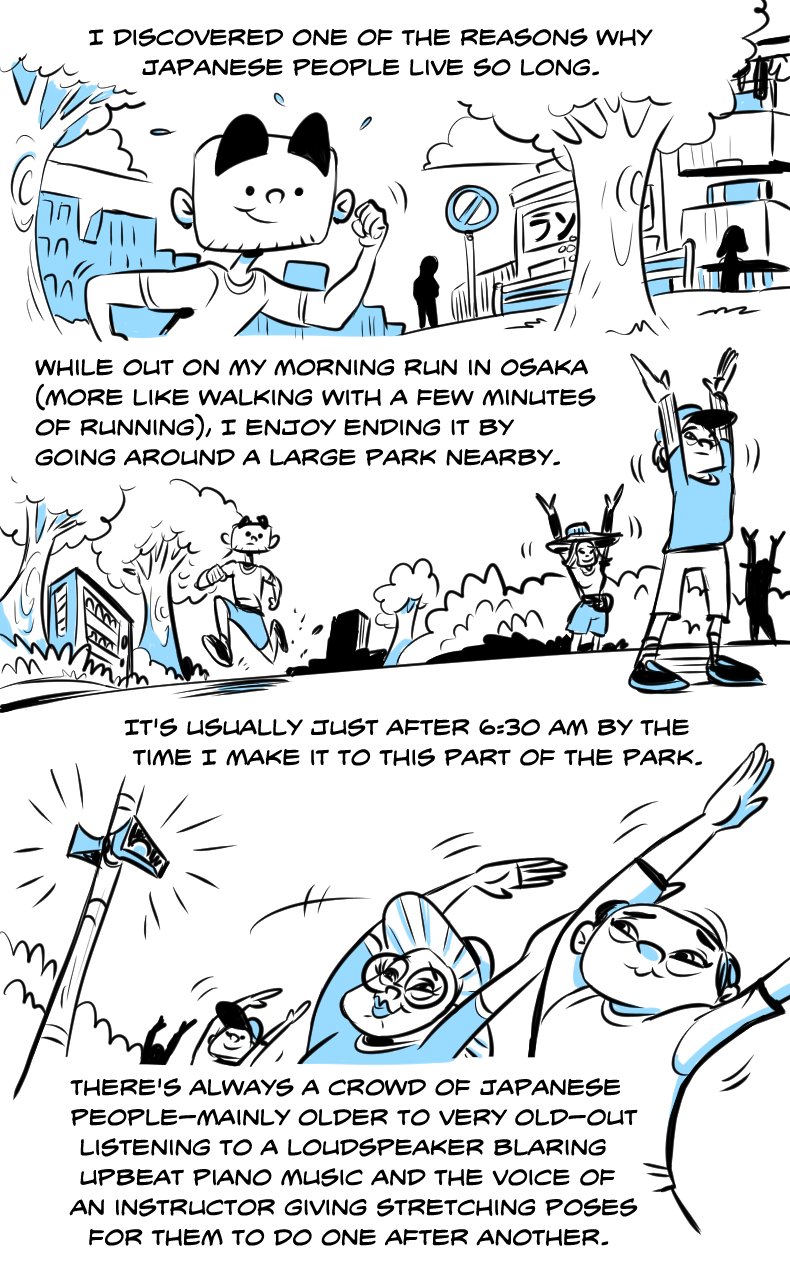

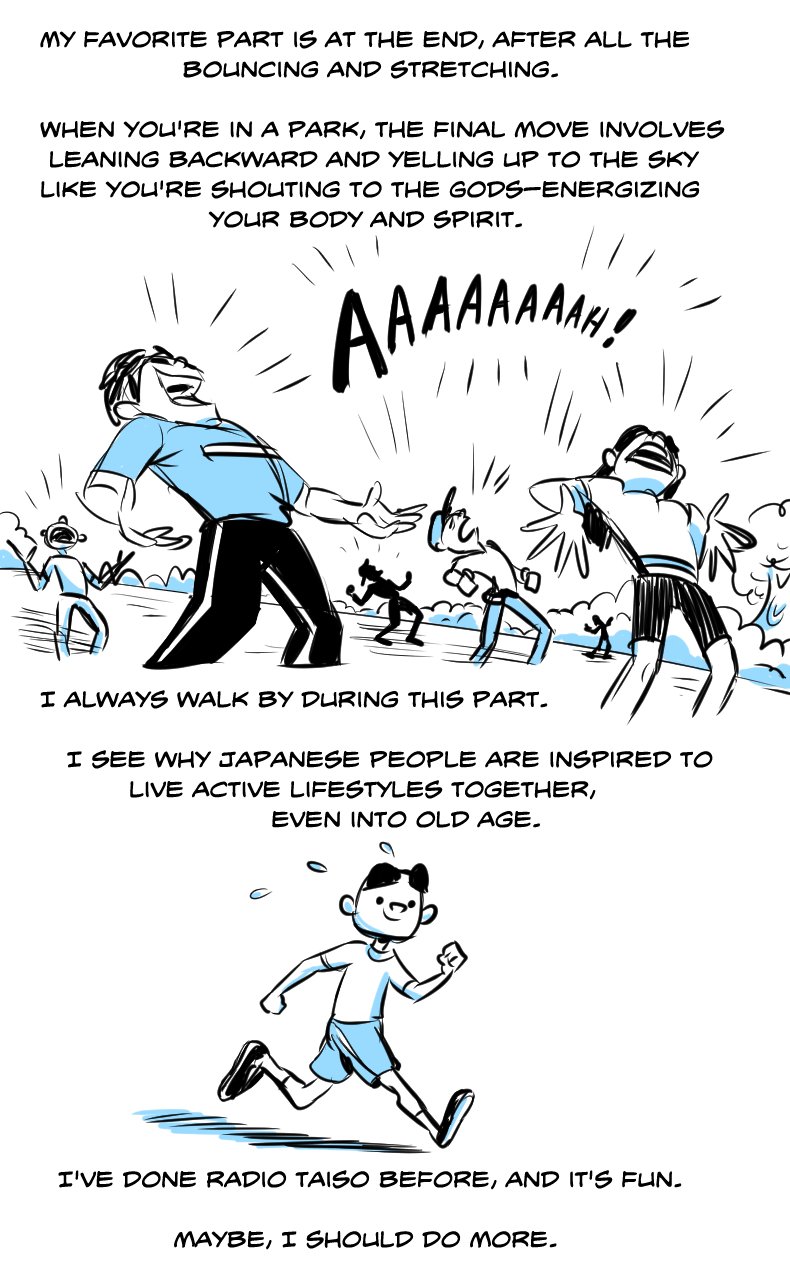
You can get more comics like this as soon as they post by subscribing to my newsletter, A New Creative Life, by CLICKING RIGHT HERE.
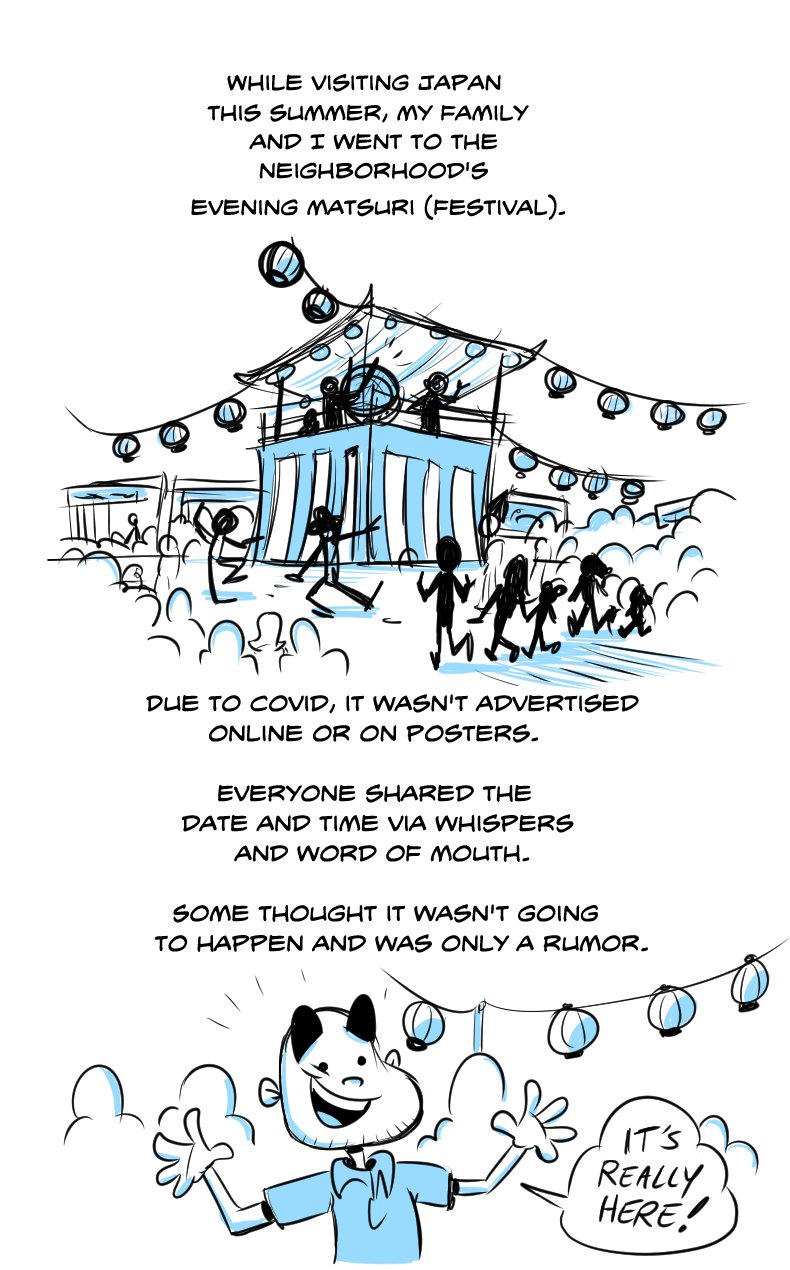
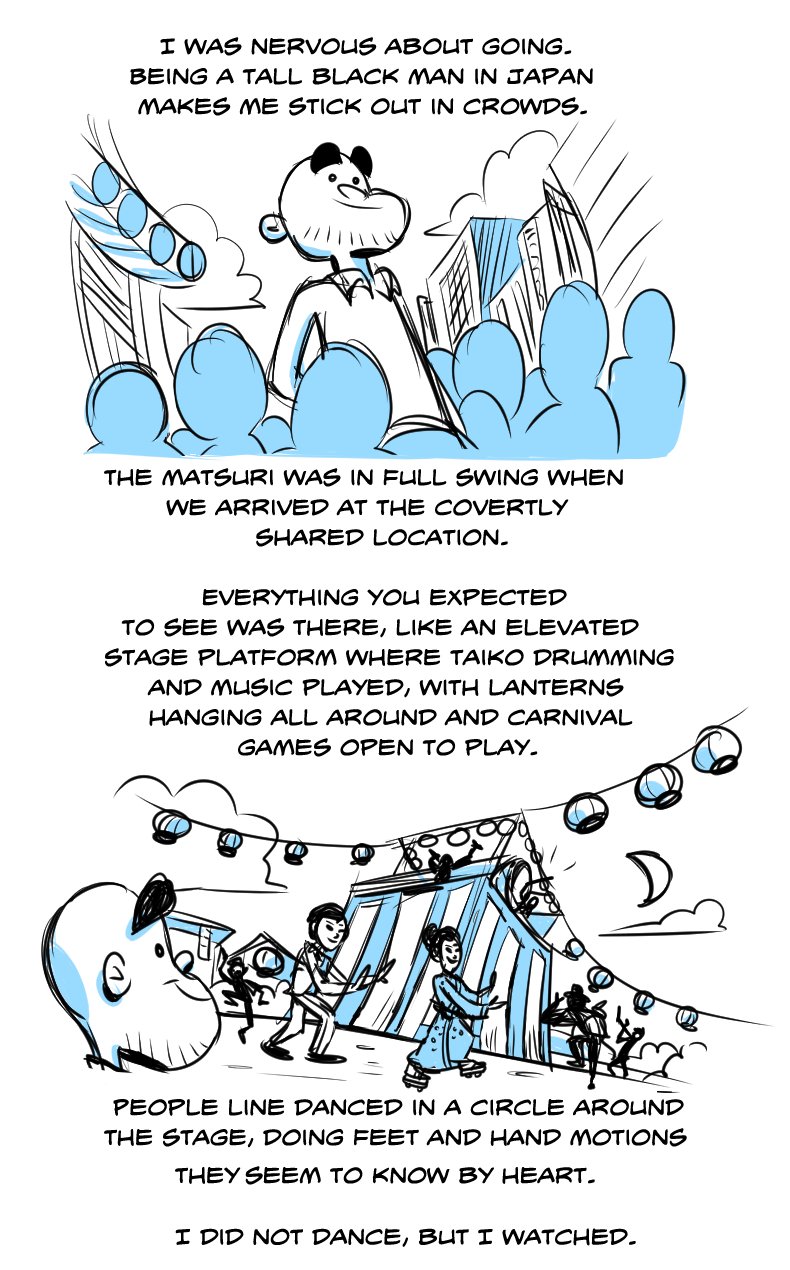


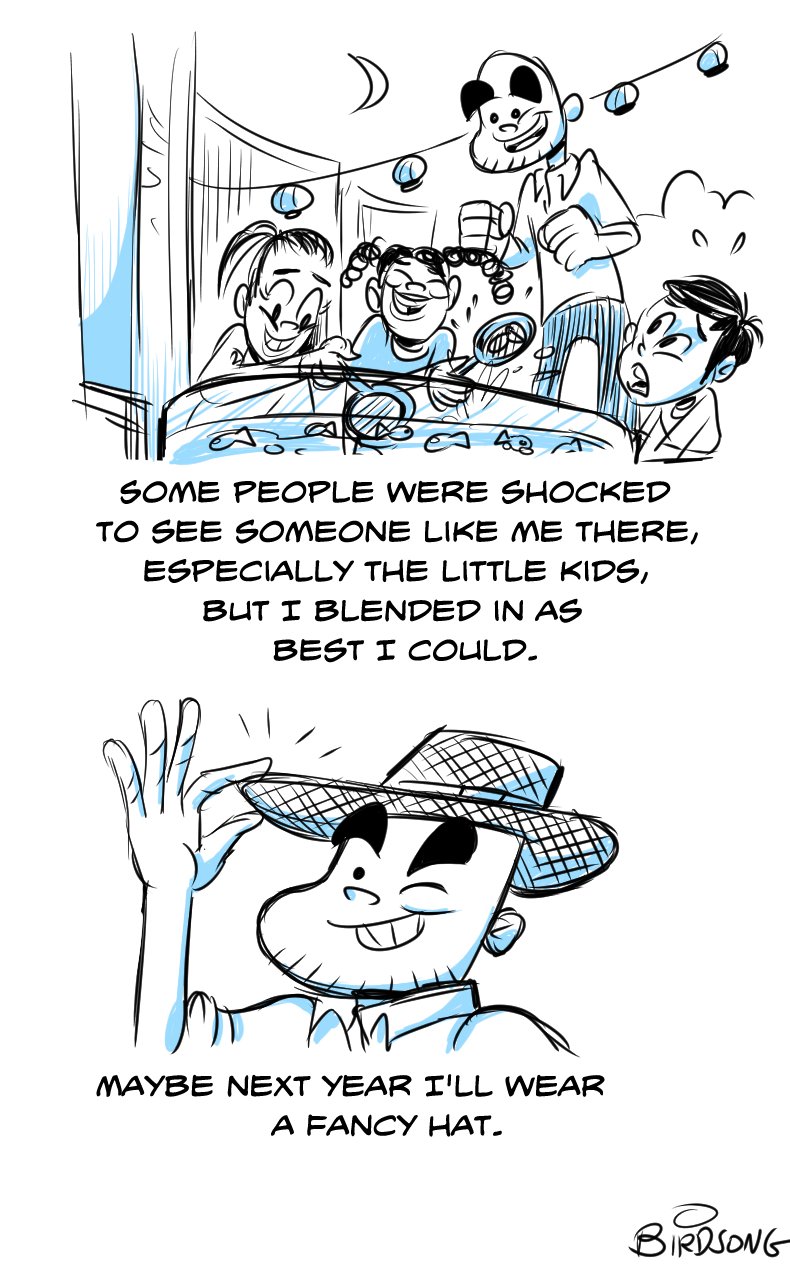
Get advice about living creatively and read more of my comic essays by joining the A New Creative Life newsletter.

A couple admiring all the gachapon choices. Photo- Rittis/Shutterstock.com
Gachapon or gacha gacha capsule toy machines have exploded in Japan.
They’ve been popular for years, but I kept seeing them everywhere in Osaka during my latest trip—entire store sections of them in malls and even at revolving sushi restaurants.
I was only away for three years, and now almost any kind of toy is in a gachapon.
They’re like gumball machines where you put your coins in and turn the knob, it makes a gacha gacha sound, and a plastic ball falls out with a toy inside. You pop it open and see which character or object you’re lucky enough to collect this time.
Each machine has a different toy theme based on anime characters or just about anything imaginable. Yup, there are plenty of gacha toy collectors hoping to find that missing character from their collection. It’s not just for kids. Adults love discovering their favorite gachapon wherever they go.
Most gachapon toys cost around three hundred yen each or roughly three dollars, which might sound expensive, but it doesn’t feel like it because you’re using coins.
There’s a one hundred yen coin, and dropping three of them in a gachapon feels easy and fun. I couldn’t resist taking photos of some of the more interesting toys available for your gacha gacha purchase.
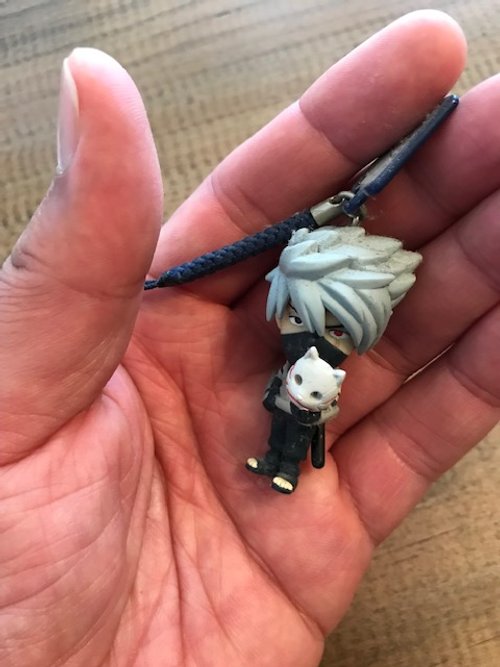
Here’s a Naruto gachapon toy in my hand for size reference.

Who wouldn’t want birds hugging bread?
Cute animals are everywhere doing strange things. Maybe some of these are associated with manga or anime, or they’re mainly there to make you smile and wonder about their meaning.

Cute bears wrapped in food? Should you hug them or eat them?

Panda bread looks delicious!

Cute kitty cat pancakes. They don’t look very happy to me.

Aaaaah! Scary cats!!
Sometimes, the animals are busy doing one of their hobbies. Or waiting for you to squeeze them.

This one looks like a cat’s dream.

Nothing’s more relaxing than squeezing the life out of a cute squishy bird.
If you’re a foodie, I guess these gachapon toys might be something you could collect.

Oooh! The sashimi looks so fresh!!

Stackable burgers are so hot right now.

Wait. Is this even food?
I didn’t know furniture was an option for gachapon toys. If you’re into miniature models, these are for you.

Airplane seats that recline. Buckle your seatbelts.

I love the sophistication of this Karimoku collection. So rich!
I purposely avoided the standard cartoon character toys based on anime and manga you see everywhere. It was fun looking for ones that were creative and different.
I couldn’t resist these, though.

Mini Squid Game murderers for your keys.

You can get the whole bloody family!
If you visit Japan someday, make sure to get a few gachapon toys. They make great souvenirs and are fun to shop for while you’re sightseeing.
What creative capsule toys have you seen or bought?
A New Creative Life is a reader-supported publication. To receive new posts and support my work, consider becoming a free or paid subscriber.

All photos were taken by or illustrated by the author.
I like knowing I’m doing the right thing. Who doesn’t?
Making sure to meditate every morning is something I think I’m doing right, but I’m probably wrong. Accepting your biases and thinking your point of view may not be accurate is something I’m working on improving.
I can say, sitting in silence for 10–20 minutes first thing in the morning helps me face my emotions head-on. When it’s time to write or draw, it’s easier for me to plug into my creativity and get going.
There must be something to it.
I just recently returned from a phenomenal trip to Koyasan, a town on top of a mountain full of ancient Buddhist temples in the Kansai region of Japan. I’ve wanted to go for many years. Visiting my in-laws in Osaka allowed me to finally get close enough to make the overnight expedition happen.
Even if you’re not a practicing Buddhist, you can pray in the temples, as long as you throw a few coins in the donation bin before clapping your hands twice and bowing.
Getting up to the temples is no joke.
You can only take a cable car straight up the mountain. Beautiful views, but you definitely feel far removed from the regular world below.
I believe Kobo Daishi, the monk who established the town over a thousand years ago, meant it as a place for zen training and meditation. You can tell by the calmness all around the area.
Many of the original temples were burned down during wars or due to lightning strikes but rebuilt multiple times over the years and are gorgeous.

The temple we meditated in during our visit. The doors were open, but no pictures were allowed inside.
This is the temple next to the ryokan (Japanese traditional style hotel) we stayed in during our visit. The doors are closed now, but they were open for us to have an enjoyable meditation class inside in the morning.
You’re not allowed to take photos of the interior but believe me, the decorations were ornate and beautiful. We had two monks sharing how to pray and meditate.
I remember them mentioning sitting with your legs crossed with the left one under the right. Your hands are in your lap, palms up, with your left hand under your right as well. Somehow, you should close your eyes almost all the way shut, not fully closed, and look down at your nose.
They said this helps you focus more, but I kept closing my eyes after about twenty seconds.

We couldn’t be in the full crossed legs position because the monks had us sit on small benches inside the temple. Placing our hands together and breathing deeply for several minutes is something we could do while sitting.
Looking at my nose and holding my left hand under my right, palms up, helped me focus on being in the present moment. Now, when I’m at home practising, on the floor with my legs folded and my hands, I notice how much smoother I ease into deep meditation.
My mind wanders less at first.
Getting your body in the proper position and posture truly makes a difference. I knew sitting on the floor with my back straight helped before, but now I’m even more convinced stacking your hands and touching your thumbs together helps to center your mind.
The monks showed us that rocking side to side helps to loosen your body if sitting in the position is uncomfortable at first. I understood that even monks have days when sitting correctly may be difficult.
In the beginning, you can always find a way to make something work better for yourself.
We also practised writing calligraphy with a brush pen when we returned to our room. I couldn’t write Japanese, but it didn’t matter. I mainly had to trace.
The kanji characters were underneath; all you had to do was brush over them. The writing is about living a peaceful life, and the monks recited this during our meditation practice time. Writing with a brush pen was meditative and took more time than I thought, but I stuck with it.
I felt there was a lesson there.

The results of my calligraphy writing practice.
As a cartoonist, one of my favorite details about Koyasan, and just about everywhere in Japan, is how they have cute mascots.
This little monk character, Koyakun, was everywhere we went, giving advice and showing us around.

Koyakun was everywhere with helpful signs to guide you.
Koyasan monks practice Shingon Buddhism. Therefore, how they taught meditation goes along with how that particular sect practices.
Even with their advice, I still believe you can meditate any way you choose. It’s easier if you think about it openly and not full of strict rules.

You should start a meditation practice if you haven’t already. We hear some of the benefits of meditation, like more self-awareness and clear thinking, but is this true for everybody? The statistics would say so. In fact, a lot of folks are into “facing themselves” daily.
-It is believed that between 200 and 500 million people worldwide meditate.
-Data from the National Health Interview Survey in 2017 showed that 16.3% of women meditate, compared to 12% of men.
-The Headspace meditation app has been downloaded sixty-five million times. [10]
If you’d like to try meditation, I suggest relaxing your expectations with how you think it should look. Sometimes you can talk yourself out of something great because you feel it must be done a certain way. Like it would be best if you resembled a bald monk sitting cross leg with perfect posture for hours.
I try my best to sit their way, with my left leg under and right leg on top and hands in my lap palms up, but sometimes I sit in a chair.
The most challenging idea for me to accept is that it’s all about mindfulness and not how you sit. Being present when and where you are and noticing your body and thoughts.
That’s it, pretty simple.
Whether you’re doing this for ten minutes — which I think is the minimum amount of time to notice a difference — or an hour, you can focus on yourself anywhere. There are times when I’m stressed that stopping what I’m doing and taking three deep breaths helps to calm me down.
All the distractions in our modern world can block our thinking. You must deal with your emotions, swimming around, desiring your attention, and making space to work things out in your subconscious.
Meditating is genuinely part of a creative life. Add as much of it as possible to your day, and watch as you calm down and think clearly more often.
Of course, I could be wrong, but it’s the most specific change I made to my life over twenty years ago, and I continually see positive results. When life gets crazy, I meditate more.
Here are more stats if you need a push to get started.
-Research conducted in 2016 sought to discover the health benefits of meditation and understand the practice’s growth. Below is the list of reasons given for starting to meditate:
General wellness (76.2%)
Improving energy (60%)
Aiding memory or concentration (50%)
Anxiety (29.2%)
Stress (21.6%)
Depression (17.8%)
In the case of all the above conditions, 60% of the people questioned in the study reported that meditation helped them significantly.
-People who meditate can reduce their chance of being hospitalized for coronary heart disease by 87%. [10]
The groundbreaking research was initially conducted in 1989 and followed up fifteen years later to see if the mantra meditation was still working its magic.
It was found that the group who used the technique had a lower CV mortality rate than those who didn’t participate in the practice.
The 1989 project focused on 73 residents, and further research has backed up the finding; however, it is still felt further research is needed to understand the full effects.
They, just like me, could be wrong.
-But wait! Did you know that 25% of people who meditate report having an unpleasant psychological experience? [23]
I guess meditation isn’t for everyone. A study of 1,232 participants found that a quarter experienced adverse effects such as anxiety, fear, and distorted emotions.
Sure, the study might have been confirmed, but we have no idea what was going on in the lives of the people in this study at the time. You know I’m open to hearing other arguments, but I believe most people will feel positive benefits from regular meditation if they try it for a month or more, and this should be enough time to turn it into a habit.
You don’t need to travel to Japan and ascend a mountain to practice meditation—hopefully, I helped you see that. When you practice, I bet you’ll appreciate my shared benefits.
I love how you can become more aware of what’s right for you when you meditate regularly. Your “still small voice” gets louder, and you make better decisions. Decisions that are based on what you truly desire.
Knowing how to pause before, say, picking your phone right up when notification dings and waiting to finish writing that page is what I love. You can have more control over yourself when you’re aware of what you’re doing.
Thanks for joining my Koyosan adventure and learning more about meditation.
How do you meditate?

Image from CNN.com
Is a giant squid statue worth all the controversy it’s getting?
If you haven’t heard, in the coastal town of Noto, in Ishikawa, Japan, they spent $230,000 of the $6.2 million received from the government for Covid relief on a 43-foot sculpture of a flying squid. Could they have used their money on something more important — probably?
But I’m not mad.
In fact, I like that they spent some of their relief money on art. Mainly to promote tourism for their small fishing town. Apparently, the area is the center of squid fishing in Japan.
I never visited Noto while living in Japan. Still, now I’m interested in seeing the statue next time I can travel back to one of my favorite countries. Squid is a delicacy in Japan. Even though Americans might not be interested in eating it, it doesn’t mean the statue is a waste of money.
When it was unveiled, Japanese people were surprised by the timing, and so were people on Twitter. Guys, a ton of readers, most likely people who have never been to Japan, were upset about this giant flying squid.
According to this article by CNN news, someone commented, “No matter how you look at it, this is wrong. They have to return that money.”
Really? Is it that serious? Indeed, there are more important matters to get this upset about.
Here’s my take on why this isn’t such a huge deal.
In a town of around 16,000 residents, there have been fewer than 30 cases of Covid-19. Not that this is okay. It’s still a concern, but why can’t they take this opportunity to do something to put their area on the map?
I’m pretty sure that at the time this statue was approved and sculpted by the artist — most likely a year ago or so — Japan was doing pretty well controlling the virus. They probably thought it would be a positive way to celebrate victory over covid.
Unfortunately, cases have spiked in larger cities like Tokyo and Osaka, and hospitals have trouble keeping up with all the new patients. Scary times right now, for sure, and I’m hoping for the best. The Osaka area is my second home, and I want its citizens to stay healthy and the cases to drop.
Even though the statue’s unveiling timing is abysmal, I think they did what they thought was right when it was being created. Should we punish the town of Noto for that?
Even if Japan was doing well-handling covid, the virus was still causing huge dips in tourism. This town found an opportunity to provide funds to local artists and construction workers in this time of economic turmoil.
I bet this statue helped provide much-needed work while also investing in a new piece of fun, publicly accessible art — the perfect socially distanced tourist attraction.
Even I want to go and take a picture in front of it.
Art is essential and beautiful. Squid is delicious and well-loved by the people of Japan. If a family visits the town of Noto, you know the kids will laugh and smile while taking pictures. Parents and couples will share their squid photos all over social media.
This statue will bring not only tourists to the area but excitement and joy.
It’s easy for people outside of Japan to hear about this and think it’s ridiculous. Why? Is this an easy way to take a cheap shot at Japan? With all the controversy over the summer Olympics, should we cancel them or not, here’s another reason to be angry at Japan. I say, calm down and let a town beautify itself.
There are plenty of frustrating things about living in Japan and the experiences I went through. I didn’t fully understand why it’s that way. Still, I smiled, and whatever it was, let it go. As a Black man, having middle school students rub my skin to see if the brown would come off, for example, was one of those.
If I compare that to a small town deciding to use the money for a wild, eye-catching work of art to put their area on the map, I say go for it.
I’m confident Noto, Japan is not a corrupt town. If they needed the money to help save lives in their area, they would have used it for that purpose. Japanese people are pretty in tune with the needs of the many. Especially compared to other parts of the world where the culture revolves around thinking more about ourselves.
If I had any issue, it would be with the government giving so much money to an area with so few covid cases. They could have passed some of that on to bigger cities. Or, saved it for emergencies like the spike in cases happening right now.
With all the negativity, fear, and death in the world, let’s try and see the good in a tiny town trying to make the best of it all with the help of art.

Imagine watching nine massive steamships for the very first time in your life, something you never knew existed, approaching Edo bay near modern-day Tokyo in February of 1854. Commodore Matthew C. Perry landed his ships in Japan, uninvited mind you, in an effort to force diplomatic relations with the Shogun and open trade.
After over two hundred years of isolating itself from the rest of the world, Japan and the average Japanese citizen knew nothing of other countries or races. Witnessing white soldiers march off their metal ships and make the demand “Take me to your leader.” must have felt close to aliens from outer space landing on our planet.
The scare tactic worked. There was no way Japanese forces could have stood a chance against the might of the U.S. military at that time. On March 31, The Treaty of Kanagawa was signed between America and Japan. The country was open to the world. Even though it would take many years to establish international trade, Japanese people were thrust into accepting a new truth. They were not alone in the universe.
What limiting beliefs are you holding on to with little knowledge or experience to back them? The world is forcing us all to open our minds. Experiencing the pandemic and watching racial injustice and protests are making us realize we’re all human. Making us see that caring about the health and well being of people is what really matters.
The truths of our modern world have landed. Open your heart.

Photo by Galen Crout on Unsplash
Moving back home to the U.S. after living in Japan for two years was a shock to my system in more ways than one.
You always hear about how harmonious and helpful everyone is in Japan. I love the country, but it’s not an easy place to live as an ex-pat, especially if you speak very little Japanese.

Photo by Alexander Smagin on Unsplash
Life in the ‘land of the rising sun’ does have its perks, though. You can have a level of peace and solitude that I find difficult to come by in the United States. Crime is low and everyone is accustomed to living politely (and quietly) with their neighbors.
That tranquility among the noise is a massive part of what I miss about being in Japan.
I felt like a human being instead of a threat.
Living in Japan for two years as an African-American male was a challenge, but also liberating.
I was an English teacher with the JET Programme and truly loved the cultural exchange with the students and teachers in the Junior High Schools where I worked.
For me, in particular, I was not just a “black man” there, with all the fear and stereotypes that come along with it. I found I was lumped into one general category—foreigner.
Students saw me as a person from another country, fascinated with my hair and curious about what America was really like.
As I walked the streets of Osaka, I felt like a person and not someone the public would see as a threat. It was miraculous!
Sometimes people stared because I looked different.
Only because I wasn’t Japanese and not because I was black. Being six feet three, I found people were also mesmerized by my height.
It was astounding, no women clutched their purses as they passed or crossed the street when they saw me walking towards them on the sidewalk.
The biggest load-off my mind? Not worrying about getting shot by the police. I’m dead serious. That was a game-changer.
You should always be aware of your surroundings anywhere you go. Still, I’ll admit, I became pretty relaxed within the safety of the cities in Japan. Watching my back became a distant memory.
I felt like a person.
I love my country but after years of feeling like the “negative other” in America, I can forget I have value. Believe it or not, when I’m in the U.S., there are plenty of instances when I feel like saying the phrase popularized by Jesse Jackson, “I am somebody” to myself. Just to remember, I matter.
I have to consciously think about this when moving through life in the U.S. Tell myself I have value. Most of the negative stereotypes for black people perpetuated in the media and entertainment, tell a different story.
When I daydream about moving to a quiet rural area, where I can have solitude, reality always seeps in. It’s not the answer for all people. Jobs may be scarce, and if you’re not independently wealthy, you’ll need to pursue a career in a major city to make money to live the life you want.
Even as a black male, I’m afraid people living outside of big cities may have fewer interactions with people of color and be more closed-minded.
Living in Japan, experiencing each day as a different kind of “other”— compared to in America— was a special time in my life. I will say though, I do know through that experience, what it feels like to be seen as scary, only because I look different.

Photo by Laura Thonne on Unsplash
You experience prejudice as a foreigner in Japan. It’s just different.
Each day wasn’t perfect. There were times I would sit down on a subway train, and the person next to me would stand up and walk to a different area. Renting an apartment can be a challenge because some buildings do not rent to non-Japanese.
Getting together with other ex-pats helped relieve some of the microaggressions. You quickly understand that it doesn’t matter where you’re from or the color of your skin. If you do not look Japanese, you have situations where you are treated as a guest and not a citizen. Everyone could relate, come together, and vent their frustrations and also share what they love about living in Japan.
I often thought about how sad it was I had to leave my country of birth and move all the way to Asia to feel safe and at peace.
You don’t need to live in Japan to find yourself. Although, for an experience of a lifetime, visiting is most certainly recommended. The country is beautiful, rich in history and culture, and Japanese people are very kind to visitors. Things get more complicated when you live there for a long period of time.
Don’t let this scare you.
Have the courage to move to a new place if you feel the urge to experience something exciting and different.
I’m still searching for my next tranquil place to call home. Something close to what I had in Japan. The reality of moving to any new country will always stick with me, though.
Living abroad helps you understand that no country, city, or neighborhood, is perfect.
When I find my next tranquil home, I expect to enjoy the positives and take the negatives with a grain of firm salt.

What do monkeys; a cat and an elephant have in common? Believe it or not, inspiration for expanding your creativity!
Actually, the animals I’m talking about are ornately carved on structures made over 400 years ago at Toshogu Shrine in the city of Nikko, Japan. The famous shrine and world heritage site is just north of Tokyo, and was built as the final resting place of ruler Tokugawa Ieyasu. He founded the Tokugawa Shogunate, the final military dynasty in Japan that lasted from 1603-1867.

Even though Japan has been a part of my life for thirteen years I can’t recall hearing about this place until this summer. My family and I visited Nikko for several days and were quite impressed with the history and colorful beauty of the area.

Not only was it lovely, there were several takeaways I discovered about the creative process just from pondering these wood carved animals at Toshogu Shrine.

Nemuri-Neko, the sleeping cat, guarding Tokugawa Ieyasu's resting place.
1. The Sleeping Cat shows us how we can receive inspiration while at rest
Nemuri-Neko, carved by Hidari Jingoro, is of a sleeping cat surrounded by flowers. It was placed at the entrance of Tokugawa Ieyasu’s grave to ward off mice and has become a famous recognizable symbol to Japanese people. What fascinates me is that the cat is sleeping and, similar to a real feline, still seems alert!
I’m reminded of how cats take frequent naps but are still aware of their surroundings and can wake quickly when approached. Just like when we’re trying to get creative inspiration for our projects, thinking hard doesn’t usually get results. It’s when we’re sleeping, taking a walk or even using the restroom that the great idea pops into our heads! If you jump right away and make a mental note or write it down, you can catch it like a little mouse.
Learn to fill your mind with images and information from research related to the project you need a great idea for. Then take a break so that it can all gel in your brain. When you let go by doing something different and turn your mind away, the answers will come!

The artist carved the elephant on the right without ever seeing a real one.
2. The Elephant shows that if you commit to taking risks you can create something no one has ever seen before
On top of a building that was used as a warehouse called “Kamijinko” is a carving of an elephant. The artist never actually saw one in real life and I think it turned out looking pretty accurate. I assume he was going off of written descriptions of what elephants look like.
There must have been quite a bit of pressure because this was to be done to honor the emperor. Since there are no elephants in Japan and no cameras at that time, he had to use his imagination to create his own interpretation. Yes, we could say that no one else had seen real elephants back then either so he could have created whatever crazy animal he wanted, but it looks like he took it seriously.
The artist couldn’t see any references for what he needed to create but still took a risk and made it happen. I’m sure he sketched plenty of ideas early on (and probably hated all of them) but found something good eventually through continually doing the work.
When you’re coming up with a new idea or design, use what you know and have the courage to put down ideas even if they look or sound awful. Getting started is the key. Learning through continually working on and through your ideas by facing fears, taking small risks and trying styles you’ve never taken on before will create something amazing.

The three monkeys reminding you to hear no evil, speak no evil and see no evil.
3. The Three Monkeys want you to train your brain and avoid evil
On the sacred horse stable or Shinkyusha are 8 carved boards along the top that depict the life of a monkey and caricature human life. One of the most famous boards illustrates the famous Buddhist teaching -if we hear no evil, speak no evil and see no evil; we can live a good life.
It’s something we have to train ourselves to do. I’m sure all of us have times when we get in deep trouble for speaking evil my mistake! As we grow in life, we learn when to speak up and when to stay quiet. You can also train yourself to be more creative as long as you understand that it will take time. It will take less time if you have a purpose.

Just like the monkeys in the carving you can make a point to avoid evil but pay attention to all the inspiration that you hear, say and see in the world.
Read more and make a point to remember one detail that you feel is important. Look at the work of artists you admire or despise and study what makes their work special. Learn a new skill. Spend time with people you think of as creative and talk with them about what inspires you. Question everything! The answers will create new inventions, characters and stories.
The bottom line is to make a point to take inspiration breaks while you work, commit to consistently taking risks and exercising your creative mind with more than just your art, music or writing. Keep these ideas in your head each day and watch your creative power expand in ways you never thought possible!
Of course, you should also take a trip to Nikko, Japan. It’s pretty amazing!

Don't hate on J. You know if you were trapped on a plane sitting next to Ryan for fourteen hours, you'd do the same!
Fried Chicken and Sushi is a Blog and humorous comic strip about living in Japan and Japanese pop-culture.
© copyright 2010 - Khalid Birdsong All Rights Reserved.